Pinto Problems + Holden Red Motor Debate - Morley's Workshop 427



|
Pinto pain, a you beaut Bentley ute, Alfa Romeo risks, and yes, more red motor argy bargy
MORLEY'S WORKSHOP
Ever had one of those Oh-my-gawd-what-have-I-just-done moments? Of course you have… you work on cars. It happens to us all. To be honest, my life is a catalogue of such forehead-slaps, but I surprised even myself the other day.
You may remember that several months ago, my online purchase of a radiator for the RS2000 came back to bite me squarely on the arse when said radiator dropped its guts on the freeway. By the time I swung across three lanes of traffic and found a safe spot to pull up, the little Pinto had eaten its own head-gasket in a spiteful act of retaliation. We both came home on a banana-back and then I was a bit surprised to learn that the Esky would run perfectly when cold, but then started popping and banging as soon as the head and block had a bit of heat in them.
So we ripped off the head, checked it for true (which it was) gave the valves a bit of a twizzle in some lapping paste and bolted it all back together with a fresh head-gasket. Hit the key, up she fires. Beautiful. But a couple of days later, I went to start the wee bastard, and it didn’t want to know.
Naturally, I began to catastrophise, wondering aloud if maybe the new head gasket was leaking and allowing coolant into the combustion chamber(s). Finally, the engine wouldn’t even turn over, making me suspect she’d actually hydraulicked.
To check this, I needed to gently turn the engine by hand to check, so I reached for a big spanner, grabbed the nearest pulley-nut and started turning the motor. The monster mistake I had made, however, was to place the spanner on the camshaft sprocket, rather than the crank pulley. So, when the engine – with the spark plugs still fitted – came up to compression, and I continued to lean on the spanner, the rubber timing belt immediately jumped about 10 or 12 teeth. Oh bugger.
Yeah, I know, rookie error, but I was so concerned that I had a two-litre water pump instead of an engine, I forgot about the basics and wrenched on the wrong bit. A couple of hours later with help from a Pinto-genius mate of mine (cheers, Tim) we had the engine re-timed and everything turning freely. The Pinto is supposed to be a free-spinning engine (should the timing belt break) but mine has a fair bit of compression and a cam with bigger lumps than Dolly Parton, so you can’t be too careful when messing with camshaft timing.
Meantime, with it all buttoned up, hit the key again, and she still doesn’t really want to know. You know what the problem had been all along? Ignition timing that had shifted (causing it to not want to turn over) and a dodgy set of spark-plug leads (that made it run like crap when it did finally fire).
Lessons? Yep: Don’t necessarily think the worst, and; don’t forget to check the basic stuff first.
Meantime, as expected, last issue’s photo from a workshop manual showing a red-six in an EJ engine-bay has given the poor old mailman another hernia.
HERE'S MY TIP
Candid Camera
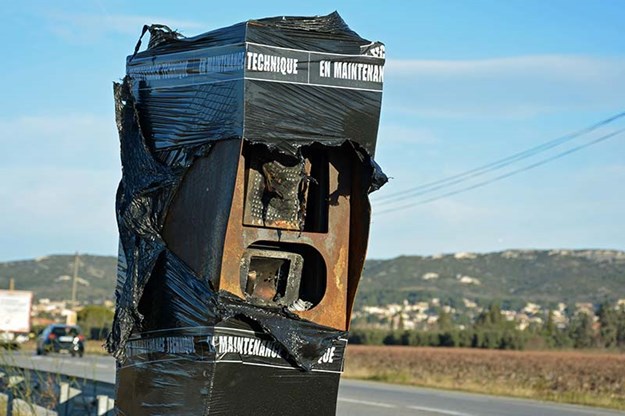
My views on speed cameras are pretty well known: ‘Safety cameras’ my big, white, hairy butt. Anyways, plenty of us have copped low-level speeding fines for being a handful of kliks over a stupidly low limit, right? And most of us just pay the fine and get on with life. Well, I reckon, provided you can show a clean driving record for the last few years, that it’s definitely worth writing a letter to the authorities and asking for forgiveness. Just this once, guv’nor. And I’ll never do it again. You’d be amazed at how often it works. Apparently.
LETTERS
And so it begins…
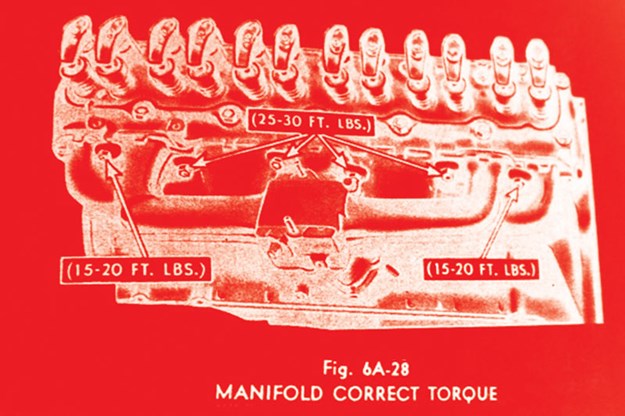
Very impressive, Morley, for spotting the details in that EJ/EH Holden workshop manual. Myself, I’m a fan of all EJs and EHs and that’s pretty much it.
The idea that EJs had red motors does not surprise me and, yes, I do believe that they did. Any car, truck, bike or tractor manufacturer needs to test engines before they are released. I am sure similar things happened at Ford and Chrysler, too.
Die-hard EH fans will probably deny the photo as a mis-print somehow. EH fans often tell me the EH was a better car than the EJ because Holden sold more of them. I tell them that the only reason was because the EH had the red motor. If the EJ had had the red motor from the beginning, I’m sure the numbers would have been reversed.
When I purchased my EJ ute it had a 186 and an M20 gearbox and was in very poor condition. Upon closer inspection during the first week of ownership, it seems that the car was originally built with an automatic transmission. Now, everybody tells me there was no such thing: Automatics were in Premiers and the odd panel-van. Remember, we’re talking EJs not EHs. So I dug a bit deeper and rechecked the car’s tags, steering column and trans tunnel. Apart from the hole in the floor for the M20, it all added up to a factory automatic vehicle.
Since I purchased my car, I have not seen another auto EJ ute, but I reckon they do exist in small numbers. Again, I’m impressed with your detective work, Morley, so congrats. Meantime, let’s start a new conspiracy theory: Did the XD Phase 5 really happen?
Charlie Zammit,
Colo, NSW
THANKS FOR the pat on the back, Charlie. But I have to come clean and admit that the illustration showing a red motor being pulled out of an EJ engine bay was pointed out to me by a mate of a mate. To be honest, I would probably have just flipped right past it, but once the anomaly is pointed out to you, it stands out like dog’s bollox, doesn’t it?
In my experience, Charlie, it depends on who you talk to when it comes to theories on the existence of an EJ ute with a Hydramatic auto ex-factory. I’ve heard and read both sides of the argument, but when the slick new upmarket Premier model was only available in automatic form, it stands to reason that Holden would try to maintain the allure of the auto by denying it to buyers of mere commercial vehicles. Anyway, if nothing else, I reckon you’ve just kicked off another round of pub arguments on the subject. And we haven’t even got to the Phase 5 Falcon yet. And wouldn’t the Phase 5 have been an XB?
That’s red alright

That’s a red in an EJ alright. I thought you’d made a blue when checking my workshop manual when I saw the drawing without a rocker cover on page 6-18 in the EJ section. Flipping along to the EH section page 6-26 I found your photo. Look at my photos closely and you’ll just see the long straight vent. But a 186 in an EH? Well my mate had a rather quick EJ with assistance from Yella Terra, twin carbs and headers. Our ol’ 149 couldn’t keep up. Repco had a deal with GM-H involving changeover reco engines for the taxi industry pre "throwaway" times. They swapped our 149 for a brand-new stock186. Blew me mate’s EJ into the weeds. Also, phenomenally economical with fuel consumption going from about 22-23 miles per gallon to 30-plus at 70 miles-per-hour (pre-60mph limit.) That bigger engine just loped along. By gees we were sorry to see that car go. Even the kids loved it but being on the beach and saving for a house we couldn’t afford to keep up with the rust. Here’s to ya…
Aussie Sadler,
Mornington, ViC
JEEZ MATE, how Aussie is that for a name? Literally. Now, please tell me your eldest son is called Tenterfield… Anyway, glad you agree with me that the photo does, in fact, show an EJ Holden engine bay with a red motor fitted (see last issue). That it’s an official Holden workshop book (with a GM part number no less) makes it all the more relevant in the case of this apparently never-ending discussion.
Maybe a few of you out there are getting tired of the back-and-forth of this topic, but judging by the amount of mail it’s generating – even three years down the track – it seems like plenty of you are still interested. And me? Mate, I’m happy to listen to all opinions on the matter till the proverbials come wandering home to be milked.
To be honest, if the red-motored EJ did ever exist, it was probably with a 149 cubic-inch motor, not a 186 since it wasn’t until the HR model of 1966 that the 186 was first seen. But, like you, I know of plenty of these motors that found their way into earlier model Holdens and my experience tallies with yours in that they sometimes exhibited incredible fuel economy. One bloke I remember as a kid had a HT Holden with what we kids all knowledgably described as a `worked’ motor. As well as a frightening turn of pace, the thing could also allegedly beat 35 miles to the gallon on a highway run. About the only thing in town that could touch this HT was another fella’s 265 Charger. Ah, the good old days, eh?
Stay between the flags
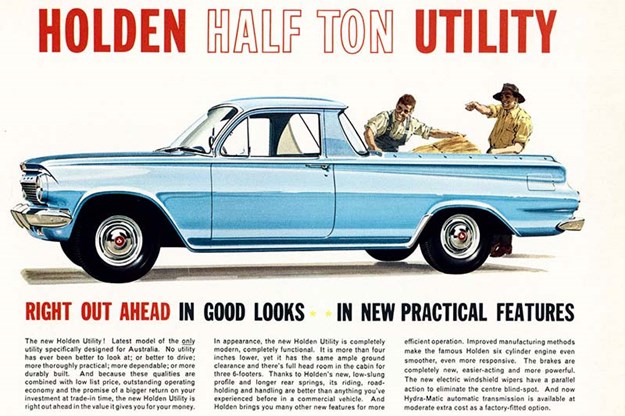
Ah Morley, just when you thought it was safe to go back into the water. A GM-H photo of a red motor and an EJ body, to confirm the story about factory-produced EJ models with red motors. And now we can all finally get a good night’s sleep.
Nah – we can’t have that. How about "Maybe after they released the EH they still had stocks of EJ ute and van bodies and body parts, which they slipped on to the EH production line."? So the photo is not of an EJ with a red motor, it’s of a red-motored EH with an EJ ute or van body!
Sleep tight,
Richard Fisher,
Email
HEY RICHARD, I like that theory. That’s the sort of lateral thinking that continues to get politicians elected. Funny thing is, since a red-motored EJ would have required the different cross-member and engine mounts of the red-six, maybe you’ve hit the damn nail on the head. Perhaps that’s what was going on the whole time. I mean, Holden retained the EJ’s tail-lights (and the rest of the rear quarter-panel, presumably) for the EH ute and van, right? So, in a way, an EH ute or van was already an EJ ute or van to a certain extent.
Good pick up.
An Alfa as cheap wheels?
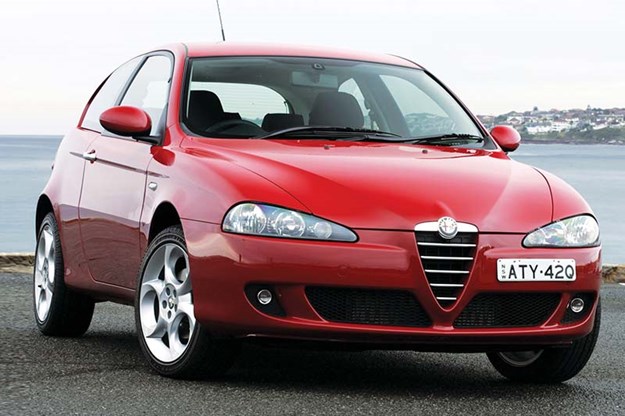
I have really enjoyed your bit in Unique Cars ever since it started. It is the first part of the magazine I read. In a way it’s the UC version of Dirty Wheels which will leave most of your readers puzzled, but I will let you explain who George Ambrose was.
I am 75 years old, still go to work part time and love cars. However, I have had the misfortune (I am kidding) of having had company cars for most of my working life and whilst I would have loved to amass a shed full of collectibles it just hasn’t been possible. The nearest I have come is to rally a couple of cars in my youth being a Peugeot 403 and a first series six-cylinder Toyota Crown (true). I also bought my wife an XB V8 Falcon Ute, but sadly sold it before it was worth much.
So here I am, newly on the pension and only have a sensible fleet, both Mazdas and living in the bush. Aussie muscle cars are out of reach and anyway our two-car garage will hold only one car up to 5 metres and one much smaller. So what can I buy as a toy that doesn’t break the bank or become a colossal asset that will attract the attention of Centrelink?
Out went the spouse’s Mazda 2 and after much trepidation I finally managed to get my heart to overrule my head and bought a Ferrari red Alfa Romeo 147 Twin Spark in beautiful condition, perfect servicing and 117K on the clock. And I love it. How much? Less than $5K and only 12 years old. No wonder the Alfa Owners Club has so many members, but they are keeping this sort of news quiet.
The emphasis in UC is so much on the `collectibles’ but very little coverage of what might make a cheap fun machine. So maybe my Alfa will need a costly service down the track but, I bought it with 12 months rego, and even the timing belt had been recently replaced. So what have I got to lose? Nothing!
David Hughes,
Email
DAVID, YOU flatter me by comparing this column with the legendary Dirty Wheels column in UC’s sister magazine, Wheels. Penned by George Ambrose, Dirty Wheels was a monthly collection of the sort of problems, cock-ups and stories of inspirational fixit solutions that keep the average mechanical workshop grinding along. But it was more than that because of the wonderful, lateral way George thought and his natural affinity with putting words in the right order. So, while I blush and suspect your opinion of this column is possibly not warranted, thanks for the compliment my friend. By the way, while Dirty Wheels is no longer part of the Wheels monthly diet, the spirit lives on in a column called Dirty Stuff in Street Machine magazine. Written by the interestingly named William Porker, he and George Ambrose are peas from a pod…if you know what I mean.
Now, you’ve asked a very interesting question when it comes to Alfas: What have I got to lose? To be honest, I don’t think `Nothing’ is the correct answer. Frankly, older Alfas seem to be able to invent new and impressive ways to ruin their owners’ lives, and that extends from the mechanical to the electrical to the cosmetic. And that, David, is why your car was bought for $5000 even though it’s a relatively new car that was relatively expensive when it was filling Alfa Romeo showrooms. Frankly, most people are terrified of the prospect of their beautiful, precious Alfa going bang. Or clunk. Or fzzzt.
While it’s true that Alfa is not the only brand to suffer from this, it’s also true to suggest that Toyota Camry owners don’t lie awake most of the night, staring at the ceiling to nearly the same extent.
I guess if you’re prepared to walk away form the remains if the worst happens, then you have less to lose, but it sounds to me you’ve fallen for the 147’s obvious charms. So the best advice is to listen to what the car is telling you during every drive and to ensure that your maintenance is spot on. The Twin Spark four-cylinder engine was a little charmer, to be sure, and by the time the 147 came along was tried and proven to the extent that it won’t be the weakest link in this model. My own Alfa fantasies involve a 1960s Super Giulia 1750. in off-white or that funky bathroom green, I’m not fussy.
I love the list of cars you’ve managed to own and slide between the trees over the years: What a mixed bunch. A V8 Falcon ute for the wife? Makes all sorts of sense to me. And the 403 Peugeot must have made a brilliant car to drive quickly on dirt roads because it was all sorts of balanced. But a Toyota Crown rally car? Must have been a real handful with all that weight, an underpowered engine and a ladder-frame chassis. And I speak from experience as I got my L-Plates way back when in a 1969 Toyota Crown that was my mum’s daily at the time. Now, combine a lairy 17-year-old kid with plenty of country roads and you can see how I know this stuff.
Meantime, I take your point on the subject of including attainable cars in the magazine. It’s something I’m pretty passionate about and it was the catalyst for the RA40 Celica project car upon which I’m currently skinning my knuckles. To be honest, the response to the stories on this humble little nugget have really surprised me in terms of the sheer number of people who have expressed interest in this apparently forgotten Tojo, not to mention some measure of affection for the ugly little spud.
Runner in the night
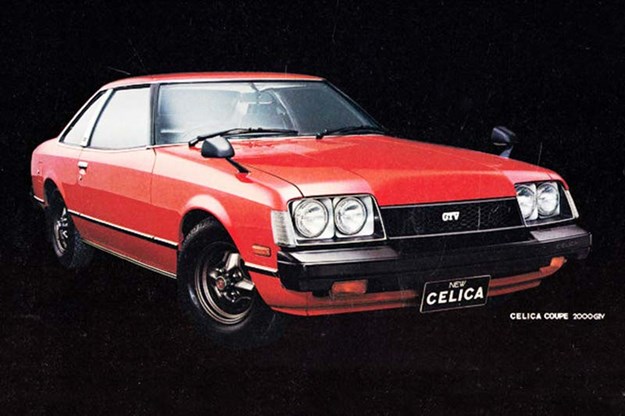
Great segment, full of interesting topics. Most recently you’ve tweaked my attention with progress on your RA40 Celica, having owned an 81 lift-back.
Sadly, that car was dismantled and put to rest over 20 years ago. Anyway, Issue 424 caught my attention with your intention to change front seats. This is the exact task I carried out to my RA40 and enclose RTA documentation you may find interesting.
In brief, the drivers-side seat broke and instead of fitting an old-original a new SAAS was purchased (which I still have). A metal-worker by trade and with a workshop full of the necessary equipment, a day was spent converting a Datsun 200B seat-runner. The Datto runner was selected due to width and runner length (your comment on the RA40’s runner; ‘quirky bugger’ was spot-on). The goal was to retain as many original components, bolt sizes, range of movement and engineering reversibility just in case the road-worthy inspector decided to look under the seat-cover. Actually, he did, so my work was not lost. Good luck with rest of build.
Tim McIntosh,
Email
HMMM, MODIFYING anything to do with a car’s seating is always running the gauntlet a bit, isn’t it? Any engineer will soon tell you that the strength of the seats, their runners and the way they’re mounted is all crucial to safety in a crash, because keeping the occupants in positions where seat-belts and air-bags can do the most benefit is critical. And that’s why any modifications in this area need to be properly engineered.
I was actually thinking about cutting off the standard Celica rails and welding them to an adaptor to accept the new seat. That way, I’ll retain the factory standard mounting points which are, obviously, engineered to be sufficiently strong. The danger is that I might make the seat cushion too high (I’m long in the body) and make the car uncomfortable. Clearly, I’m going to need to spend plenty of time with a tape measure before I start cutting anything.
Interesting that you’re another fan of the RA40. I constantly have trouble understanding why these things haven’t taken off, especially when you consider the prices being asked for the previous TA22 and RA23 models. And don’t even start me on the prices of RA28s (the mini-Mustang Liftback version of the first-gen Celicas). I still reckon that finding a chrome-bumper, rear-drive coupe with a Bathurst pedigree for under five or six grand (for a good one) is a bit of a marvel. Yet that’s exactly what the RA40 represents. Actually, there’s a question to ponder: If it’s not the RA40, what is the cheapest way into a chrome-bumper Bathurst hero? Letters and postcards to the usual address. Meantime, the good news is that mine should be on the road very soon with a shiny new set of club-permit plates bolted to its extremely orange extremities.
Posh utes follow up
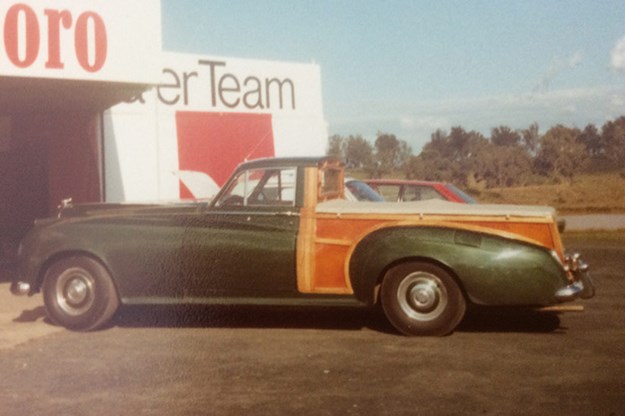
In your recent article in issue 425 mentioning ultra-rare utes I thought you might include this photograph in your next column. This is a Bentley which was mainly used on a farm owned by a famous retail family to carry hay bales and bags of feed, I think they felt guilty that the car was getting wrecked so decided rather than buy an appropriate vehicle they converted it into a ute!
This photo was taken back in the seventies and the tray was lined in beautiful redwood. Classic! Love your work.
Tony Edbrooke,
Email
HEY, THANKS for the photo Tony. Yep, some people sure do have more money than sense, don’t they? Imagine doing that to a Bentley. I mean, even if you needed a work truck for the farm, surely buying a second-hand Holden or Falcon ute would have been cheaper than the hours that must have gone into converting this old dame into a hay-hauler. Not to mention that your lovely old Bentley is now worth precisely peanuts.
That said, I have seen a few beauties over the years myself, including a couple of VW Beetles converted to utes, an XJ6 Jag and even a Volvo station-wagon that copped the Deni-muster treatment. I guess at least with those, you weren’t hacking anything rare or valuable into a tray-back, were you? Then again, it’s Farmer Brown’s car, so he can do whatever the hell he (or she) pleases with it.
And again…
Just a short story about a Roller that used to work in the Eastern suburbs of Sydney about 20 years ago. It was a Silver Cloud and had been cut so that it had a tray back on it as a one-tonner and the guy who owned it used it for a lawn mowing business. The Eastern suburbs of Sydney is a very wealthy area so he kept up with his clients.
Graeme,
Email
I DUNNO, Graeme. If a bloke pulled up to mow my lawn and unloaded his Victa and edge-trimmer from a Silver Cloud ute, I’d be immediately suspicious that I might be paying a little too much for his services. Actually, I’ve experienced the very same sentiment from a lot of management types I’ve met over the years, usually self-made blokes who have done well and now employ a few blokes. They often tell me how they’d like a Benz or a BMW, but don’t want the workers thinking they were getting uppity or spending the workers’ superannuation entitlements on cars.
Same goes for when the boss has to visit customers or suppliers; there’s a sense that turning up in something flash and expensive will send the wrong message. For many years, companies like HSV did very nicely, selling cars with lots of performance and Euro-levels of standard kit to people who needed to turn up in something with an Aussie badge to demonstrate that they were A: supporters of local manufacturing and, B: Not up themselves. Kind of seems like a cultural cringe, doesn’t it? But when you look at the psychology of it, you can see where they’re coming from.
The complete flip-side occurred many years ago when a good mate of mine (and another magazine contributor) Paul Cockburn was convinced by magazine management to enter his lovely, tuned-up E-Type roadster at the annual SummerNats hootnanny in Canberra. Cockburn was initially worried that the VB-lovin’, Torana-drivin’ SummerNats hard-heads might burn the thing from under him, based on him having the poor taste to bring a Pommy shitbox to THEIR festival. Turns out, he couldn’t have been more wrong; the SummerNats crowd loved the Jag and Cockburn even won the Go-Whoa competition in the old girl.
Small-Ford man
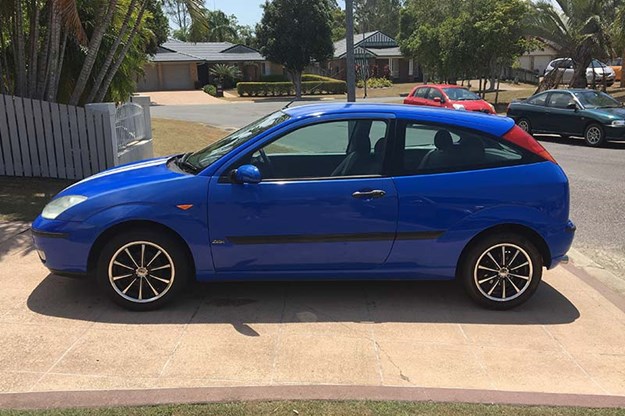
Long time reader, first time writer! As a youngster, I was a small-Ford man, particularly Escorts both Mk 1 and Mk 2. I rallied often (as a co-driver) in some pretty special Escorts and owned many myself including a Mk 1 Mexico replica with big flares and an RS2000, to list but two. A nicely restored genuine Oz-released Twin Cam (GT1600) co-owned with my brother was sold in the mid-eighties for the princely sum of $4500... alas I remember the price well.
Anyhoo, getting to the point... When I decided about 18 months ago I’d like a project car, I found that the prices for Escorts and Cortinas were totally out of my range. I pondered a Laser TX3 (non-4WD) and eventually made a sight-unseen offer on a Focus Zetec three-door at $800. After spending about the same on it, I have a pleasant-to-drive, air conditioned mid-2000’s ‘sporty’ car with cold air-con and a bit of character.
As a reflection on the value of these newer-gen small-Fords however, my Focus - which owes me less than $2k – is insured for a market value of, wait for it... about $2k! Undervalued, methinks. And when I think of the old Escort bits that I tossed away, I have a little sigh... "Ahhhhhhhh".
Tom Smith,
Email
I’M UNSURE why these later model small-Fords are cheap, Tom. It might have something to do with the bazillion alternatives from Mazda, Toyota, Holden, Nissan, Peugeot, VW and others. Back in the days of the original hot Ford littlies, there wasn’t much choice. The alternatives were early Holden Toranas (a Vauxhall Viva by another name), Corollas and Datsun 1200s that needed money spent to get them to go nearly as hard as the Ford stuff. Not much changed in the 1980s with the Datsun Stanza, Toyota T18 or Celica no match for the Mk 2 Escort two-litre. By the 1990s and 2000s that advantage was lost. Those early Focuses were the pick of the hatchbacks back then. The Corolla was a blancmange, the Holden Astra was European but fragile, Nissan’s Pulsar felt a bit cheap, the Mazda 323 was okay, but dated. As a Mk 2 Escort owner, where did you dump all those parts, just in case I’m in the area…
TRIVIAL PURSUIT
Time Savers

It’s often said that new cars are unbelievable value for money, and it’s true. And one of the reasons for that has to be the reduction in the time it takes to build a car. According to figures from Spanish member of the VW family, SEAT, production of a single car is now down from 60 hours 25 years ago to just 16 hours. A new car rolls out of SEAT’s Martorell factory in Spain (about 20km inland from Barcelona) every 40 seconds and the plant itself is as big as 400 soccer fields.
Badge of Honour

Ever wondered why the Fiat X1/9 was badged as a Fiat from its launch in 1972 until 1982 and then badged as a Bertone from ’82 until its demise in ’89? It wasn’t just marketing at work here, although the Bertone badge did imply some prestige. See, even though the X1/9’s body was built by Bertone in Turin, they were then shipped across town to Fiat where they were mated to their other bits. Which, of course, made Fiat the actual manufacturer. Until ’82, that is, when assembly of the two-seater was moved to the Bertone factory, making the car a true Bertone product, not just a Bertone design.
Write to Morley c/o uniquecars@primecreative.com.au or Unique Cars magazine, 379 Docklands Drive, Docklands, Victoria 3008
Classic Australian Family Car Value Guide home page
Muscle Car Value Guide home page
Japanese Classic Car Value Guide home page
Unique Cars magazine Value Guides
Sell your car for free right here
Get your monthly fix of news, reviews and stories on the greatest cars and minds in the automotive world.
Subscribe

.jpg)









.jpg)



